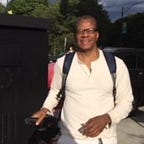The Consequences of Bad Leadership
Protests in relation to the redress of grievances .
On May 30, 2020, Minnesota’s Governor Tim Walsh stated that the overwhelming majority of protesters have been peaceful. His Lt. Governor fine-tuned the conversation, noting that there were detractors. He mentioned that anarchists and White Supremacists were fueling the flames with violence. These claims are corroborated by other public officials across the country.
Still, it is difficult to be sure. The media directs our eyes toward what it wants us to see. Most often what it targets is violence.
Many legitimate protest movements get co-opted by violent factions. We have seen this with the anti-Globalist movement; we have seen it happen at various G8 Summits. Unfortunately, violence has become a part of “our modern public protest.” Though I don’t personally condone violence, I am not here to pass judgment on anyone. People are angry. Black males are killed with impunity by Police, while other members of law enforcement stand by and do nothing. This communicates that the norms of law and order the Police are supposed to enforce only apply to non-police personnel. Police enjoy an exemption from criminality and law enforcement. Many see their uniform as a license to lawlessness. When public prosecutors turn a blind eye to complaints of police misconduct, these…
